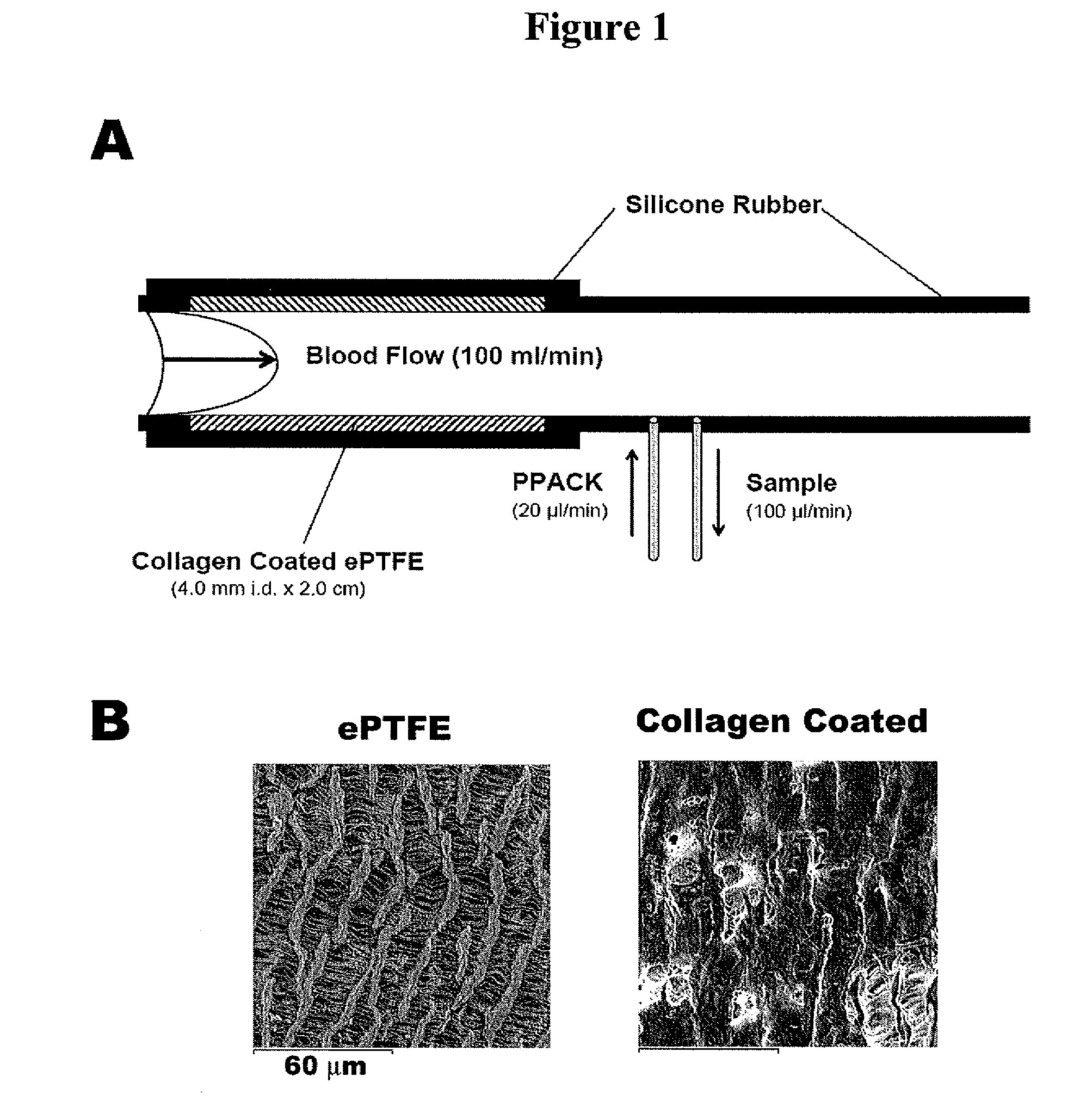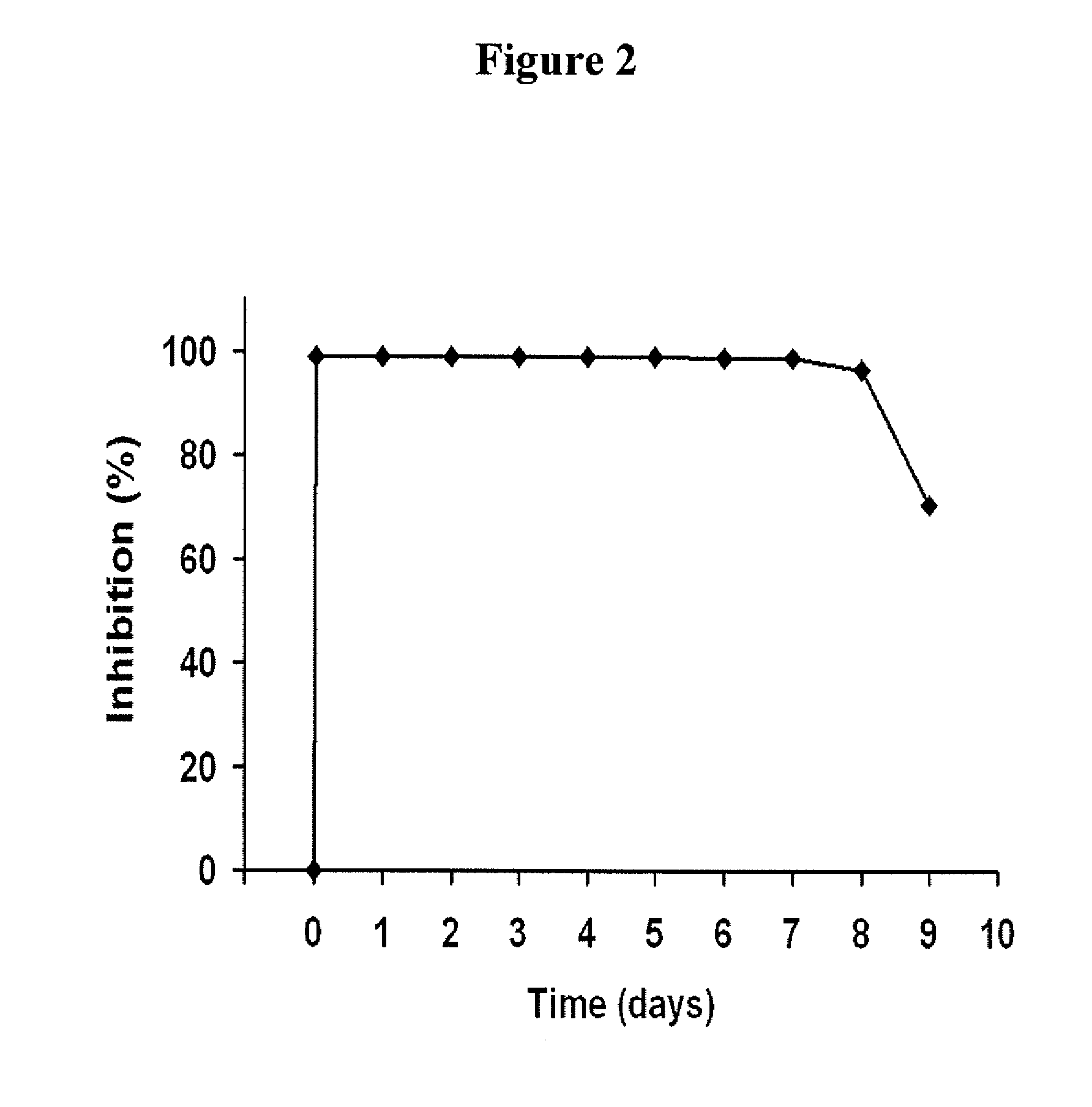Anti-factor xi monoclonal antibodies and methods of use thereof
a technology of factor xi and monoclonal antibodies, which is applied in the field of antibodies capable of binding to factor xi, can solve the problems of paralysis of hemostasis, lethal hemorrhage, and thrombosis, and achieve the effects of inhibiting thrombosis, reducing the required dose of an antithrombotic agent, and preventing thrombosis
- Summary
- Abstract
- Description
- Claims
- Application Information
AI Technical Summary
Benefits of technology
Problems solved by technology
Method used
Image
Examples
example 1
Inhibition of Factor XI with Monoclonal Antibody 1A6 Decreases Thrombin Production and Prevents Vascular Occlusion in Experimental Thrombosis in Primates
[0187]The present study in primates was designed to help clarify the role of FXI in thrombus formation, and to determine if FXI inhibition represents a relatively safe thrombosis specific approach for limiting thrombus propagation. By measuring local procoagulant and fibrinolytic markers, uniquely sensitive time dependent measurements of local thrombin production, platelet activation, and fibrinolysis were assessed. In order to delineate the role of FXI, studies were also performed using a potent monospecific antibody to FXI. Platelet and fibrin deposition on thrombogenic devices were assessed, and vascular graft occlusion studies were performed to determine the importance of FXI in the propagation and stability of relatively large experimental thrombi under arterial type shear. These results demonstrate for the first time in vivo t...
example 2
Binding of the 1A6 Monoclonal Antibody to Human Factor XI
[0229]Results from a Western Blot study corroborating that anti-factor XI monoclonal antibody 1A6 recognizes Factor XI in human and non-human primate plasma is shown in FIG. 7A.
[0230]Comparative binding studies for monoclonal antibody 1A6 were conducted using FXI, Prekallikrein (PK), and FXI / PK chimeras involving either the substitution FXI domains with PK domains (FIG. 9) or the substitution of PK domains with FXI domains (FIG. 10). As shown in the right panel of FIG. 9, monoclonal antibody 1A6 bound FXI but did not bind to PK. In addition, monoclonal antibody 1A6 bound all FXI / PK chimeras except the chimera in which the A3 domain of FXI was substituted with a PK domain (FIG. 9). For chimeras involving the substitution of PK domains with different FXI domains, antibody 1A6 was shown to bind only to chimeras in which the A3 domain of FXI had been inserted (FIG. 10). From these loss of function (FIG. 9) and gain of function (FI...
example 3
Sequencing of the 1A6 Monoclonal Antibody and Coding Sequence
[0232]mRNA was extracted from a hybridoma cell line expressing the murine antibody known as Aximab (1A6), reverse transcribed, and antibody specific transcripts were PCR amplified. PCR products were cloned for determination of the nucleotide and amino acid sequences of the heavy and light chain variable regions of this antibody.
[0233]The cell line was successfully recovered from frozen stocks. mRNA was extracted from the cell pellet of the hybridoma and RT / PCR was performed using a system of degenerate primer pools. Heavy chain variable region mRNA was amplified using a set of six degenerate primer pools (HA to HF) and light chain variable region mRNA was amplified using a set of eight degenerate primer pools (LA to LH).
[0234]Aximab Heavy Chain: A strong DNA band of approximately the expected size was observed in primer pool HD. DNA from this band was purified and cloned, and eight clones were sequenced. Four of these clon...
PUM
| Property | Measurement | Unit |
|---|---|---|
| flow rate | aaaaa | aaaaa |
| molecular weight | aaaaa | aaaaa |
| molecular weight | aaaaa | aaaaa |
Abstract
Description
Claims
Application Information
 Login to View More
Login to View More - R&D
- Intellectual Property
- Life Sciences
- Materials
- Tech Scout
- Unparalleled Data Quality
- Higher Quality Content
- 60% Fewer Hallucinations
Browse by: Latest US Patents, China's latest patents, Technical Efficacy Thesaurus, Application Domain, Technology Topic, Popular Technical Reports.
© 2025 PatSnap. All rights reserved.Legal|Privacy policy|Modern Slavery Act Transparency Statement|Sitemap|About US| Contact US: help@patsnap.com



